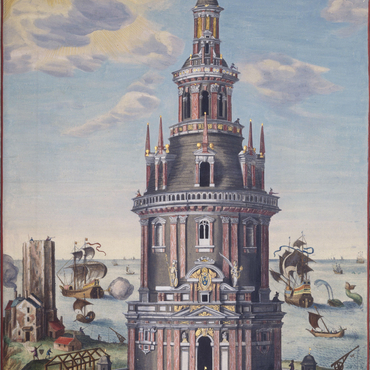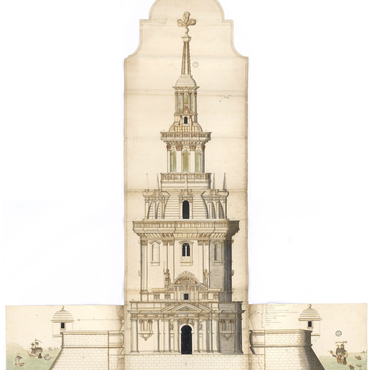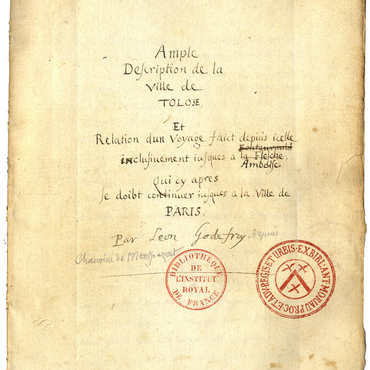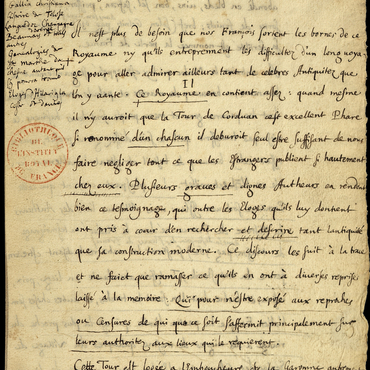
- Home
- A Renaissance monument
- The monarchy and the lighthouses of the 17th century
- The « idea » of Cordouan in the 17th century
As soon as the engraving of Chastillon's drawing was published, it gave the Cordouan lighthouse a visual identity that would endure down through the centuries. In addition to copies of this image, the lighthouse as depicted by Chastillon became a key source of inspiration for other images, with the risk that a distorted idea of the monument would become firmly fixed in the collective imagination. For example, Chastillon's drawing is the only image in which two statues, identified as Mars and Victory, appear on the lighthouse's pediment. None of the anonymous descriptions of 1630 and 1645 mention them, and in 1648, the Dutch draftsman Herman van der Hem, who was living in Bordeaux at the time, made a sketch of the lighthouse in which the statues do not appear. Even more troubling, the young Leon Godefroy visited Cordouan in August 1638. The account of his voyage offers a description of both the façade and the inside of the lighthouse – although he refers to busts of Henri III and Henri IV placed in niches on the ground floor, he does not mention any statue. With an eye to a possible publication, he reviewed his account in 1645, adding several geographical details. In between, the well-known image by Chastillon was published in his Topographie française in 1641. In the passage devoted to the décor of the inside of the lighthouse, Godefroy adds: "and two other statues". He modified his text based more on the image by Chastillon than on his own account. As to the statues, the only possibility is that they were destroyed in the storm of 1617. Although it is likely that Chastillon embellished his account with an eye to conveying the lighthouse's symbolic power, the presence of the statues was part and parcel of the image of Cordouan starting in the seventeenth century. The Cordouan lighthouse was both firmly rooted in a collective imagination defined by Chastillon's drawing, and a fanciful notion based on various interpretations.





